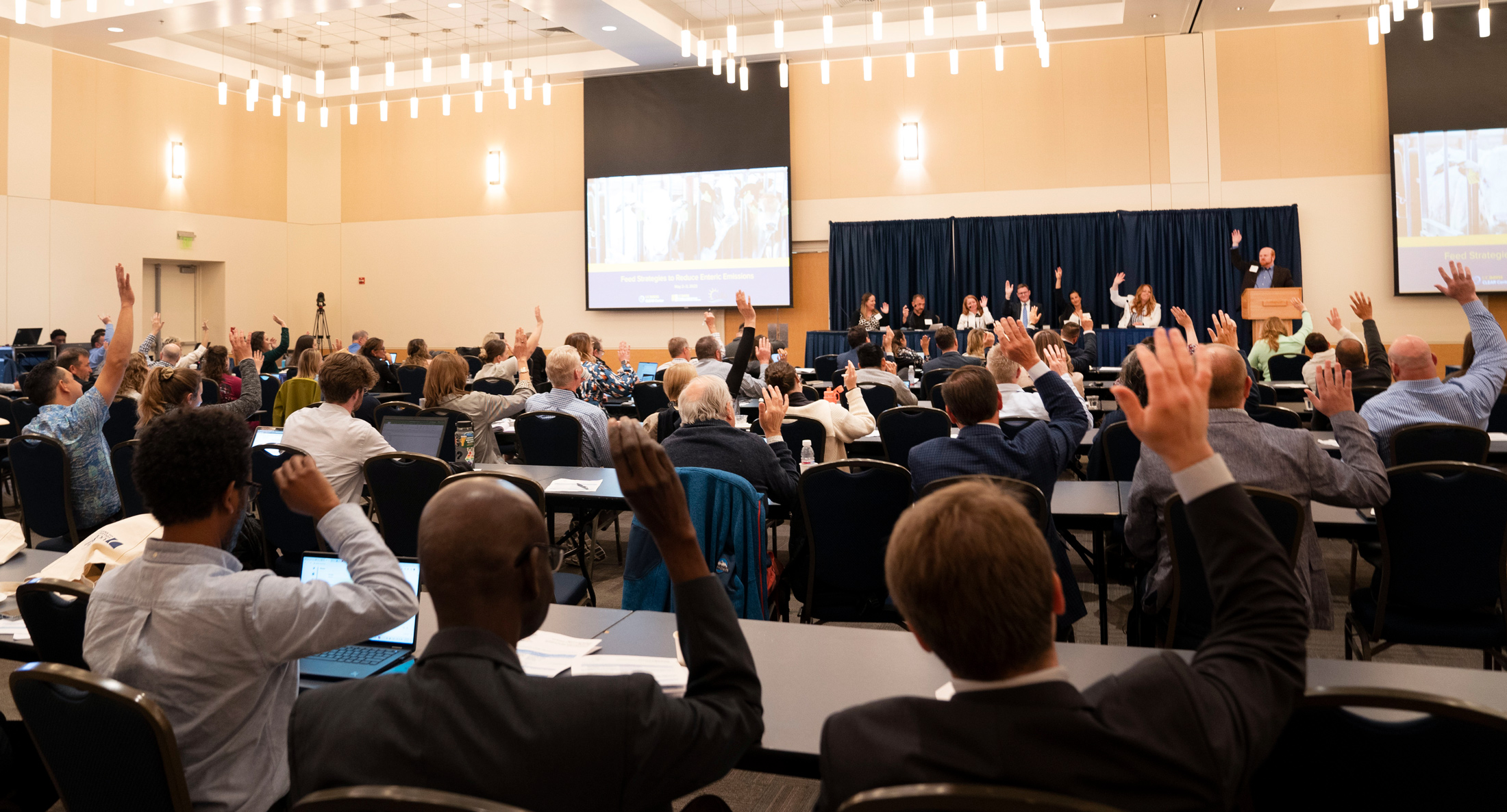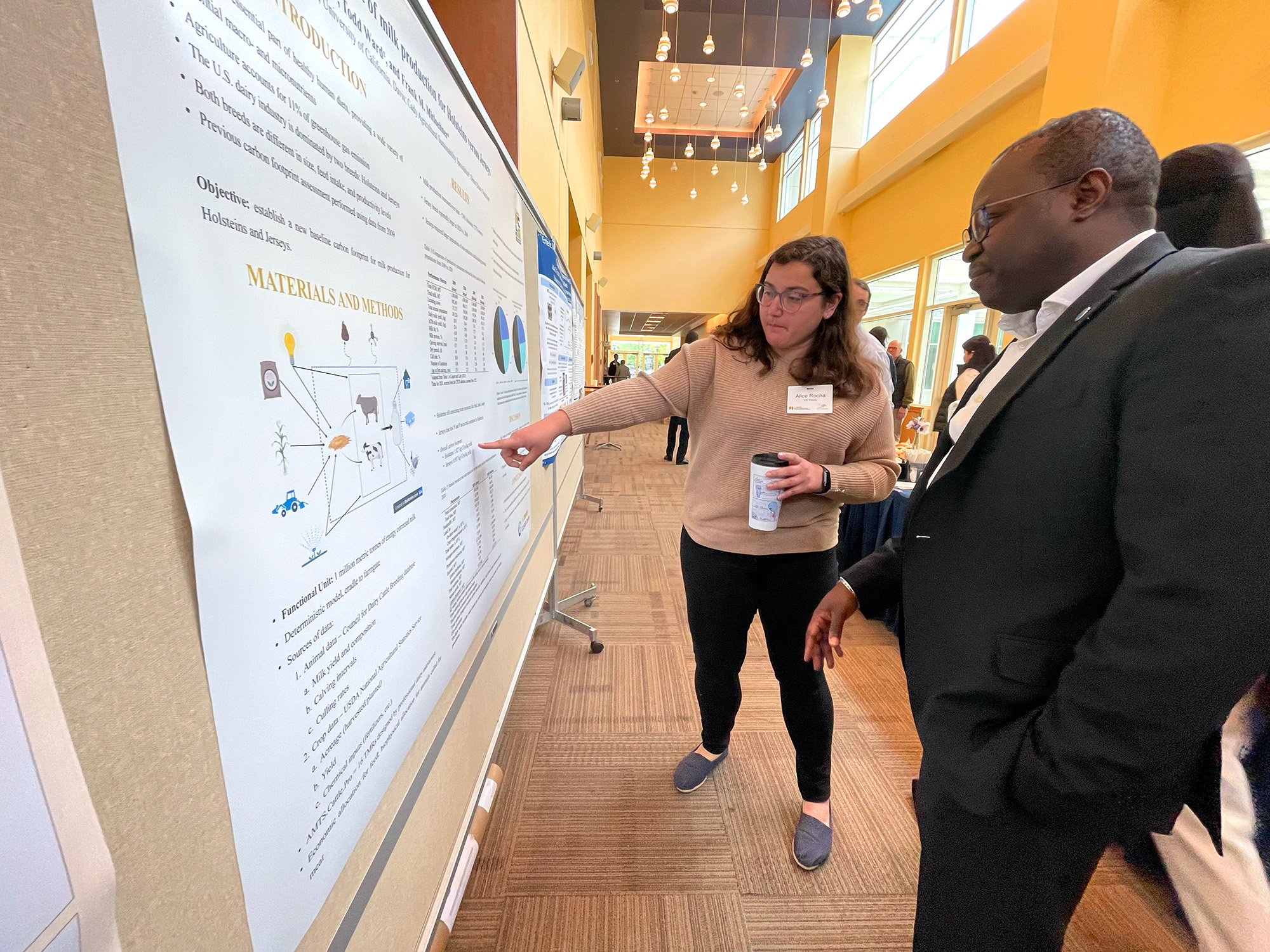
Report form UC Davis and CDFA Detailing Science on Enteric Methane Solutions Released
First-ever conference on livestock methane emissions produces valuable information, builds consensus
Several months after the California Department of Food and Agriculture; University of California, Davis College of Agricultural and Environmental Sciences; and UC Davis CLEAR Center staged the State of the Science Summit: Feed Strategies to Reduce Enteric Emissions May 2 and 3, 2023, organizers have issued a written report to capsulize some of the information shared at the conference and to encourage others to join them in a spirit of cooperation aimed at safeguarding our food supply and the planet we inhabit.
Read the Report
“For perhaps the first time ever in one place, we gathered concerned representatives from government, nonprofits, academia, NGOs, media, and industry to discuss strategies aimed at reducing enteric methane emissions, plus the associated challenges and opportunities,” said Karen Ross, secretary of the California Department of Food and Agriculture.
The agenda was a weighty one, including: the role of feed additives in curbing enteric methane emissions, the potential of gene editing, the need to streamline regulatory frameworks, the importance of data collection and measurement of livestock emissions, and the imperative to ensure safety in feed strategies for animals and humans.
The attendance list was no less impressive, reading like a who’s who in the world of agriculture and climate concern. In addition to the organizers, there were speakers and members of the audience – more than 250 total – from the United Nations Food and Agriculture Organization, U.S. Department of Agriculture, California Air Resources Board, Environmental Defense Fund, California Cattlemen’s Association, Cornell University and others.

Helene Dillard, dean of the College of Agricultural and Environmental Sciences at UC, Davis, described the event as “an amazing experience,” crediting it with fueling her already high enthusiasm over work being done at California’s leading agriculture university.
“As a co-host … we were honored to welcome to campus experts and stakeholders from virtually every corner of the agriculture system – all with the goal of continuing on a path to reducing the industry’s greenhouse gas emissions while we support its primary aim: feeding a worldwide population expected to reach 10 billion in just a few decades’ time.”
Register for the 2024 Summit
The summit came at a pivotal time in California’s journey to reduce its carbon footprint across many sectors. In that regard, the animal agriculture industry, which includes the United States’ No. 1 dairy segment, is being tasked with a 40% reduction in its methane emissions, something experts say is achievable but only if enteric methane – that is, methane from bovine belches – isn’t overlooked.
The burps are part and parcel of ruminant animals’ digestive system, and they’re responsible for releasing the lion’s share of methane from animal agriculture into the atmosphere. Ruminant animals, which include cows, goats and sheep, among others, use enteric fermentation to digest their feed. In the process, gut microorganisms break down the food matter, subsequently releasing methane gas, a significant greenhouse gas contributor.
Not surprising, the need to make cows’ specialized digestion less gassy is a common refrain, not to mention a driving force behind much research currently taking place. In short, it is the goal of those trying to land on feed additives that are safe, effective, available, affordable and acceptable to consumers. While the report points out gene editing as a field of current research and future possibilities, feed additives seem to be the most practical solution right now.
“Methane reductions from programs in place today, along with new feed-additive strategies, would put California on track to reduce methane emissions above the stated goal of 7.2 MMT CO2e to between 7.6 to 10.6 MMTCO2e by 2030 from the dairy sector alone,” said Frank Mitloehner, an expert in animal agriculture and air quality who directs the CLEAR Center. “Without the adoption of a feed-additive strategy, it‘s unlikely the goal of reducing 40% of methane emissions will be met. Feed additives offer the greatest potential for methane reductions throughout the sector and could be feasibly implemented at existing operations.”

Although a 40% reduction in a potent greenhouse gas like methane is a reward unto itself, the benefit is even greater, Mitloehner said. By significantly reducing methane emissions, the livestock sector can achieve climate neutrality in the foreseeable future and even take a bite out of historical emissions. That’s because methane behaves in the atmosphere much differently than other greenhouse gasses, making managing it an advantageous tool in our climate toolbox.
“It’s a fast and furious gas,” Mitloehner said. “Furious because it has 28 times the warming potential of carbon dioxide, our most plentiful GHG, and fast because it lasts for about a decade, after which it’s broken down into CO2 and water vapor.”
Because methane has a relatively short lifespan, if emissions remain constant, what is broken down can nearly match what is being emitted. In other words, if methane emissions are lowered, methane is being taken out of the atmosphere faster than it’s being added. That puts animal agriculture in the enviable position of holding a key to helping solve our climate crisis.
“Only two sectors can help pull carbon out of the atmosphere – forestry and agriculture,” Mitloehner said.
The report also highlights the critical role of continued investment in research and the collaboration of stakeholders in achieving sustainable and environmentally responsible animal agriculture practices. Gov. Gavin Newsom and the California State Legislature have recently allocated $10 million for research on feed strategies to reduce enteric methane emissions and an additional $25 million for an enteric methane emission reduction incentive program.
The organizers of the May 2023 summit are working on the 2024 conference, which will be held May 21 and 22 at UC Davis.
Media Resources
For media inquires contact Joe Proudman at jproudman@ucdavis.edu.
